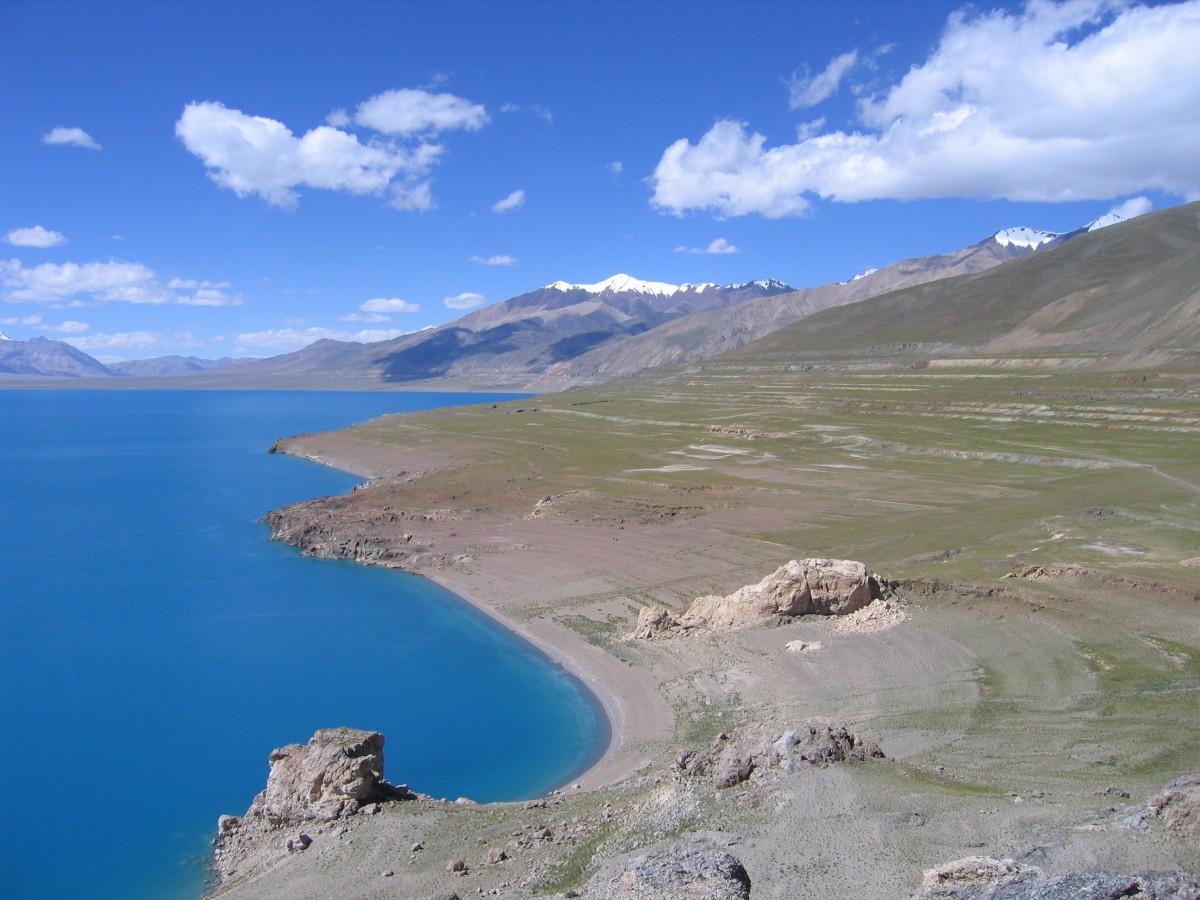
In search of pure quartz
A small heap of very fine white quartz sand glistens in the palm of Prof. Ralf Hetzel’s hand. The grains of sand allow him to look deep into the past. To be precise, the cosmogenic nuclide Beryllium-10 (10Be) does. Such nuclides are produced by cosmic radiation in solid rock. “They help us for example to determine ages for geomorphological features such as river terraces or moraines, and to measure erosion rates of landscapes all over the world” says Hetzel, who heads the Tectonics and Structural Geology working group at the Institute of Geology and Palaeontology at the University of Münster. However, it is a long journey before such statements can be made.
One landscape which Ralf Hetzel is especially interested in is the Tibetan Plateau in Central Asia. With an average height of 5,000 metres and a diameter of around 1,500 kilometres, it is the largest and highest plateau on Earth. “Although I’ve been travelling around this region for over 20 years now,” says Hetzel, “exploring landscape evolution and mountain formation of the Tibetan Plateau has still lost none of its fascination for me – on the contrary.” He has traveled to the region more than 15 times, having to accept many logistical hurdles: complicated visa applications, long flights to Beijing and from there to Lhasa, the capital of Tibet. After that, endless kilometres in a jeep on dirt roads. On almost impassable terrain, the journey goes ever upwards into the mountains. “Every extra metre of altitude is hard for the body,” says Hetzel. “We have to stop several times to adjust to the climate. After three or four days you are getting used to the new environment, your breathing adjusts, and you start sleeping better.”
We discovered that landscape development proceeds very slowly here. With an erosion rate of 5-10 metres in one million years, the Tibetan Plateau erodes a hundred times more slowly than, for example, the Alps
Hetzel willingly accepts this torturous ordeal, because the landscape offers a breath-taking backdrop which is highly unusual for this altitude. In the eastern part of the Tibetan Plateau, large rivers such as the Mekong and the Yangtze have carved out deep gorges. Above the steep valleys and gorges occur relics of a flat landscape with many large lakes whose origin and age have long been disputed.
Ralf Hetzel and his team have been studying the formation of, and changes to, this flat landscape since 2011, with partners from China, Germany and the USA. “We discovered that landscape development proceeds very slowly here. With an erosion rate of 5-10 metres in one million years, the Tibetan Plateau erodes a hundred times more slowly than, for example, the Alps” Hetzel explains.
Today, the scientists also have an explanation for the origin and the age of this extremely flat landscape: It was formed more than 50 million years ago (i.e., before the collision between India and Asia had started). At that time, the region was still at a much lower elevation than today, only about 1,000 metres above sea level. In the course of the India-Asia collision, the Tibetan Plateau was uplifted to its current height and the Himalayan mountain range grew along its southern margin.
In order to find the evidence for this, the researchers first examined sedimentary rocks with an age of 50 to 100 million years that are exposed in sedimentary basins at the eastern edge of Tibet. In a multistage process, they first crushed the rock samples down to a size of 0.5 to 0.25 millimetres. They then washed the samples and treated them with acids. “In this way we can obtain, from solid rock samples, quartz with a purity of 99.999 percent which we need for further analyses,” Hetzel explains.
The quartz was then dissolved in acid and cleaned with so-called ion-exchange resins. This enabled the scientists to extract the cosmogenic nuclide 10Be. “The great advantage is that 10Be has a very long half-life and only decays very slowly. It can therefore be used as a reliable ‘contemporary witness’ for dating old surface forms or recording slow processes of landscape change,” says Hetzel. The fact that experts today can provide quantitative details of the age and the speed of erosion of a landscape or of volcanic activities is something they owe primarily to the great methodological progress that occurred in the understanding of cosmic-ray physics and cosmogenic nuclide formation. Preliminary work on the method was developed in the 1950s, 1960s and 1970s – but it has only been in the last 20 years that it has experienced a boom worldwide. Ralf Hetzel has nothing but praise for this “revolution in geomorphological research”.
Further field studies are planned to extend the findings made so far. “Our bags are packed – we’re just waiting,” says Hetzel impatiently. “But the Corona pandemic has completely ruled out any research expedition at present.” So, plan B has come into effect: Chinese colleagues are taking rock samples in Tibet and send them to Münster so that the projects and analyses can continue. However, the geologist has also started to study a not quite so distant mountain range – the Alps. “In this region too, there are still a lot of interesting questions that wait to be answered,” he says.
Ralf Hetzel's research results on this issue can be found in the following scientific publications:
Hetzel, R. et al. (2011). Peneplain formation in southern Tibet predates the India-Asia collision and plateau uplift. Geology. DOI: 10.1130/G32069
Strobl, M. et al. (2012). Landscape evolution of a bedrock peneplain on the southern Tibetan Plateau revealed by in situ-produced cosmogenic 10Be and 21Ne. Geomorphology. DOI: 10.1016/j.geomorph.2012.02.024
Zhao, X. et al. (2021). Existence of a continental-scale river system in eastern Tibet during the late Cretaceous–early Palaeogene. Nature Communications. DOI: 10.1038/s41467-021-27587-9
A complete publication list is available at: https://www.uni-muenster.de/GeoPalaeontologie/en/strukturgeologie/publications.shtml




